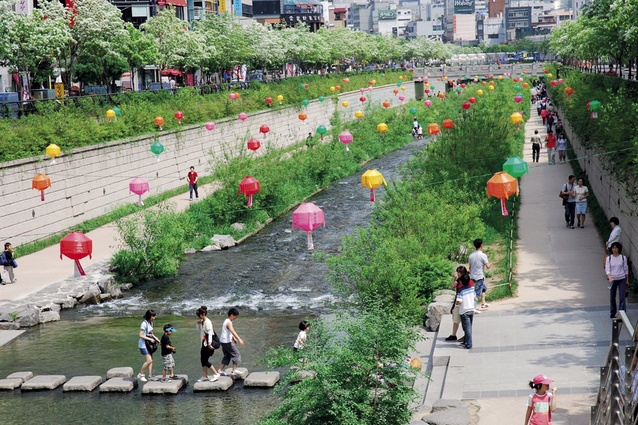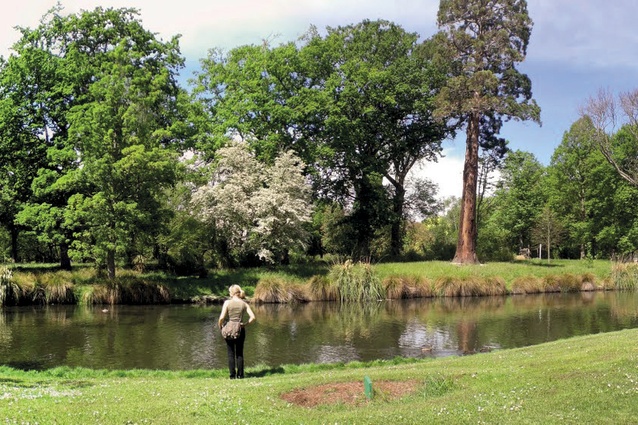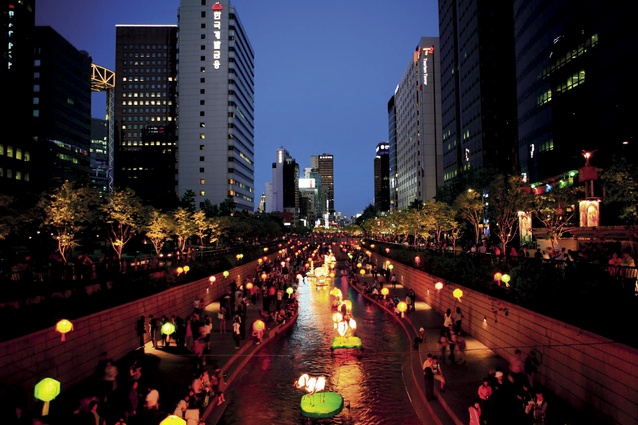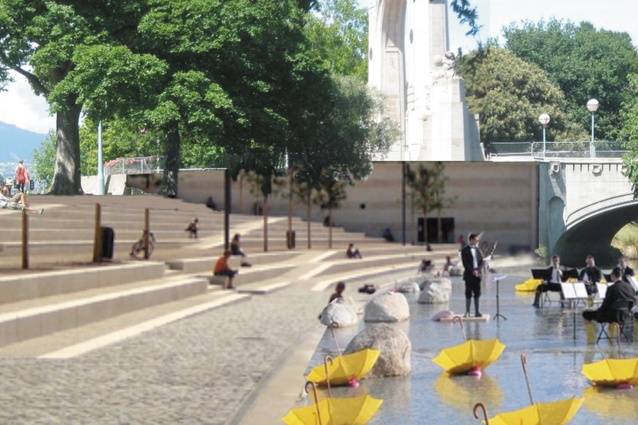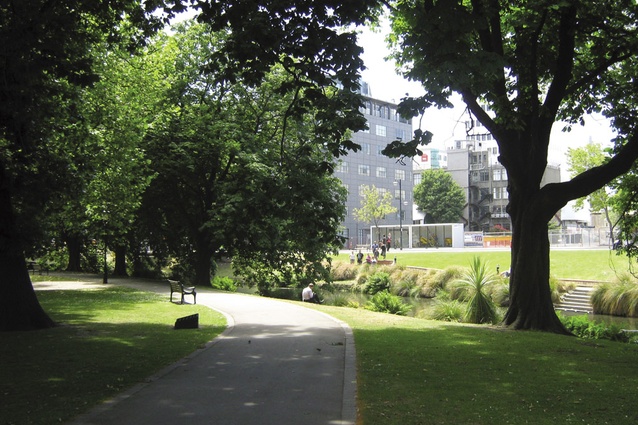Down by the river
As landscape works on the Avon River gather pace, Christchurch native Chris Bruin ponders riparian interventions elsewhere: Seoul’s recently uncovered Cheonggycheon Stream and the leftbank of the Rhone, as it cuts through the heart of Lyon.
One of the major landmark projects for the Christchurch central city rebuild is the Avon River Park and along a part of it work is nearly complete with the installation of pathways, planting and timber platforms. How the project progresses from here though is largely unknown because although the park has been widely promoted and enthusiastically accepted by the public, little has been revealed of the actual design. This is unfortunate because the Share an Idea event of 2011, where the public were invited to offer suggestions for the rebuild, was intended to be an ongoing, collaborative and open approach to the design of the city’s amenities including the rivers extensive green space. ( Editor’s note: since this article was first published more information about the proposed designs has been released.)
Some of the ideas forwarded for the Avon River included: “create a bund that follows the river, 50m wide on each bank. Run trams and cycleways along it…”; “…rollerblades for hire by the waterfront”; “…water features for children to play in. Giant boardgames so you can bring your own game piece…”; “Outdoor gym equipment by the river, picnic areas…”; and “…maybe a treetop walkway alongside the river”.
Perhaps a reason for overlooking the public submissions (and instead relying on two design corporations) was the ambitious nature of some of the suggestions. The suggestions opposed the restrained condition of the riverbanks caused by trends in landscape architecture and urban planning, which developed during the 20th century and advocated conservation and preservation of green and blue space and, paradoxically, the development of road infrastructure. The consequences of those trends remain today, and as a result the riverbanks appear as a continuous green space with limited pedestrian access and offer only a limited type of social use.
Two urban riverside transformations which have confronted this condition and pattern of development, and whose status before transformation could be viewed as mirroring the Avon River, are Cheonggycheon Stream in Seoul Korea and the leftbank along the Rhone River at Lyon.
Before their transformation the sites suffered due to extensive road infrastructure and uniform aspect, and though they differ in physical and economic scale to the Avon River, their condition and perception has similarities with those affecting the Avon. The appearance of the riverbanks were described as neglected, monotonous and lacking interest and, beyond places to park a car, drive over or walk past, they discouraged visitation. Additionally, these conditions were viewed as reflecting and contributing to a lack of development in the cities and so transformation was seen as a way to not only improve the amenity of the space but also to encourage public and economic activity in the wider area.
Due to the historic legacies and intense urban conditions at Seoul and Lyon, one of the first considerations for the sites was improvement in the quality and experience of the water courses. Water quality is universally recognised as a significant determinant in the success of urban riversides and was important at Lyon and Seoul because the transformations re-established links to the water edge and created opportunities for direct engagement with it. At Lyon, an expansive, shallow pool was built along the river’s edge (the expanse, depth and flow of the actual river prohibits use), providing a place for young children to safely play and, where the terraces coincide with the pool, a stage for music and theatre performances. The pool also has elements that allow people to cross the water and sit within it.
At Cheonggycheon, water entering the stream is controlled to minimise the impact of dry spells and monsoon. The manipulation of water means water is present all year round, which allows wildlife to be brought in and extensive planting of the riverbanks. For further visual and audible interest, the gradient and profile of the stream’s channel has been manipulated so the water goes through a series of contortions as it flows; sometimes the flow of water is quiet and meandering, at other times it is drawn in and pushed through introduced sluices, or rippled and bounced over (introduced) rocks.
Development of the stream has produced an extensive arrangement of steps and ledges in a variety of formal and naturalistic styles including use as a means of crossing the stream. The latter feature introduces and generates an element of risk for the user and together with the planting and ‘wildlife’ adds a ‘natural’ typology to the city’s more familiar hard urban landscape. Although the stream and banks are an addition to the city’s public space, the space is clearly separated from the commercial activity above which means the space acts as an escape from the everyday urban condition and an opportunity for people who may not normally engage with an urban public space, such as woman and children, to take part in the public life of an inner city public space.
In contrast, Lyon has seamlessly connected the existing urban fabric with the river and has introduced facilities for a variety of active recreational pursuits. On a principal thoroughfare between the roadside and the river edge, two decoratively ‘tagged’ skate bowls have been installed and a range of objects placed nearby for BMX’ers and scooter riders to perform on. Along and above the riverside, cycleways extend along the length of the river, into the city and through public parks and wetlands. To encourage these activities, ‘lookout boxes’ have been installed to supply information on the cycle routes. These are furnished with water fountains, ice cream stalls, bicycle and skate hire, child care facilities and a lift.
Away from the intensely developed centres, both Cheonggycheon and Lyon take advantage of the typically elongated form of water courses in similar and normative ways. They both use the water course as a device to establish links to the urban functions and areas beyond which allow the cities to express both tangible and idealistic notions of interconnectedness and inclusivity, as well as setting up wayfinding devices and landmarks which improve the cities’ legibility.
If any inference is made from the suggestions of Share an Idea, then the concepts which have informed the transformations at Lyon and Cheonggycheon could be applied to spaces along the Avon River. An important difference between these earlier transformations and the current state of the Avon River is the unorthodox spatial arrangements and ‘artificial’ features contained in our offshore examples. These elements distinguish the spaces from the surrounding areas. I suggest that this artificiality (might initially upset some New Zealanders sensibilities), along with the range of features that give the spaces their unique atmosphere and inclusivity, is the reason people like them.

